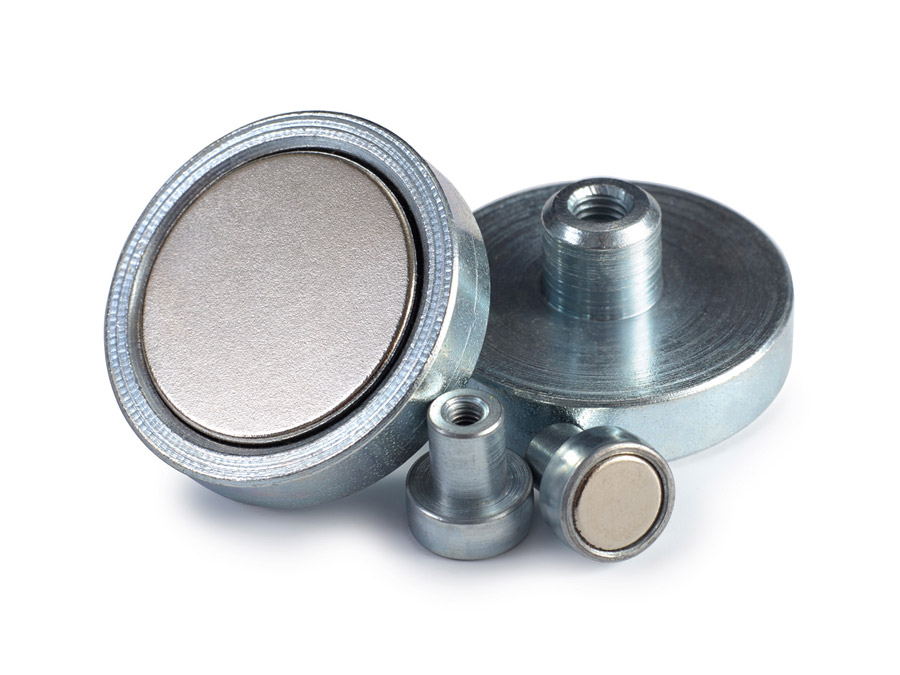Can magnets lose their magnetic properties over time?
Although it takes many years for this to happen, it is possible that magnets can lose their magnetic properties over time, even permanent magnets, which, for many, are no longer permanent because they can no longer resist demagnetization.
A permanent magnet is a material that has the ability to resist demagnetization, including layered demagnetization and thermal demagnetization, and this ability is characterized by a physical parameter called coercivity. If a demagnetizing field or reverse field is smaller than the coercivity of a permanent magnet, the permanent magnet will maintain the same magnetic flux.
However, it will lose some flux when the demagnetizing field is removed, so if a demagnetizing field exceeds the coercivity of a permanent magnet, the permanent magnet will demagnetize and reverse remagnetize.
Also, magnets are vulnerable to heat or drops, which misalign their fields and impair alignment. But let's look in detail at the three common ways in which magnets can lose their magnetic properties over time, and these are:
Below, we detail each of the three reasons why magnets can lose their magnetic properties over time.
1. Vía calor
Ferromagnetic materials will lose their magnetism if they are heated above a point known as the Curie temperature. At this point, the energy put into the magnet from the heat will permanently disrupt the magnetic domain structure of the material, turning it into a paramagnetic material, which is an effect similar to that occurring in materials called hard ferrites, which exhibit a form of magnetism called ferromagnetism; the analogous temperature for these materials is known as the Neel point.
To restore the magnetism, you would have to re-magnetize the magnet again, either in a solenoid or with another permanent magnet. If you heat a magnet a little, it will lose some of its magnetism, but by returning it to room temperature, depending on how high it was heated and the shape of the magnet itself, full magnetism can be restored.
2. A través de un campo magnético desmagnetizador
The second reason why magnets can lose their magnetic properties over time is the aforementioned coercivity. Modern permanent magnet materials such as Sm-Co and Nd-Fe-B have high coercivities; older materials such as Alnico or ceramic (hard ferrite) have lower coercivities. With a sufficiently strong magnetic field of opposite polarity, it is possible to demagnetize the magnet, whether it comes from another permanent magnet or a solenoid. Interestingly, an opposing magnetic field is sometimes applied to a magnet to "knock it down" or to lower its overall magnetic output so that it can be used appropriately in an application.
3. Vía shock
This only applies to older materials, such as magnetic steels and Alnico materials; the mechanism that creates coercivity means that they are susceptible to demagnetization if sufficient energy is transmitted through the material via a shock, such as falling or hitting with a hammer. Modern materials do not suffer from this type of problem.
Consequently, magnets can lose their magnetic properties over time, so when choosing a permanent magnet for, for example, a motor or a device/machine, it is necessary to take into consideration the demagnetization/recoil field of the motor and the maximum working temperature to determine the coercivity of the permanent magnet.
It should also be mentioned that some permanent magnets, especially sintered NdFeB magnets, are vulnerable to corrosion and/or oxidation. If they suffer from corrosion/oxidation over time, their microchemistry and microstructure will change so that they lose some magnetism and even become invalid. To prevent corrosion/oxidation, these permanent magnets will choose suitable coatings according to their working environments.








